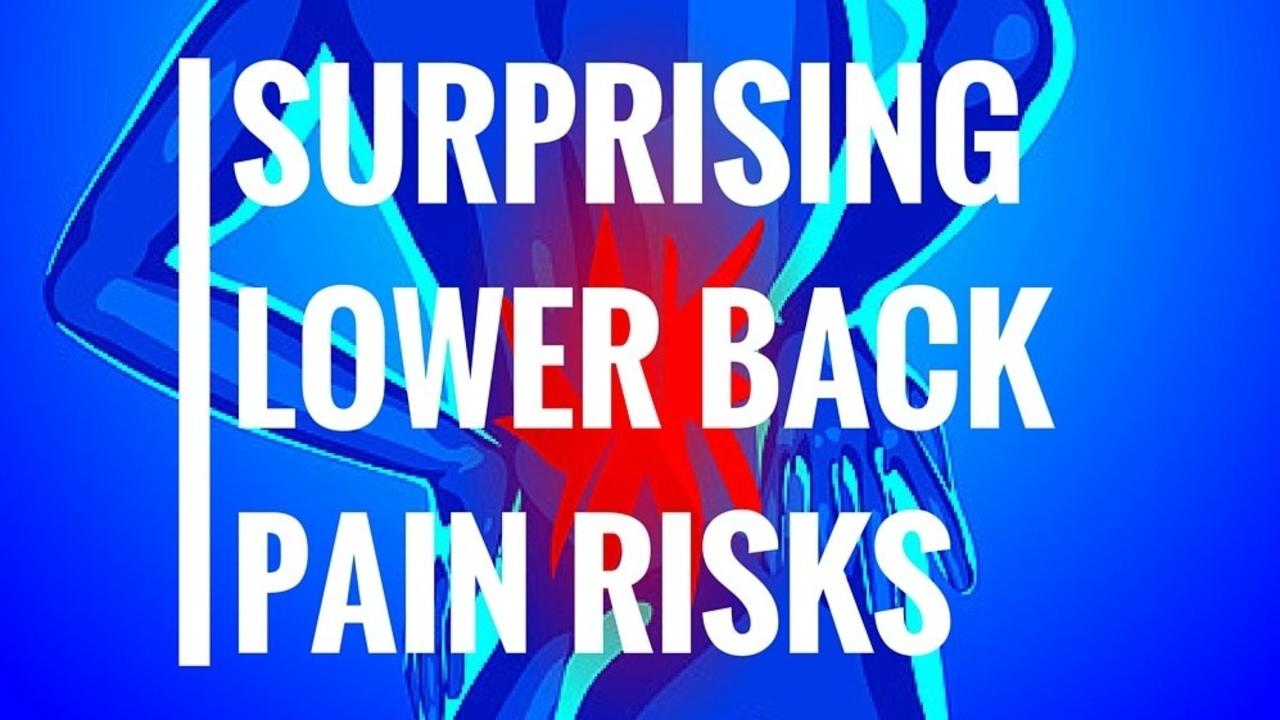Surprising Lower Back Pain Risks
Nov 01, 2017
So the World Health Organization has stated that low back pain is a leading cause of disability. It occurs in similar proportions in all cultures, interferes with quality of life and work performance, and is the most common reason for medical consultations (Ehrlich, 2003). In the past, jobs that were more strenuous were always thought to have more ergonomic risk. An it makes sense right? That the more times you pick up heavy items or have a higher work load, the greater the negative impact on a person’s lower back. And this makes the person more susceptible to injury…right? Sure, lifting heavy objects and doing strenuous work increases your chances for injury. But believe it or not, I see far more complaints of lower back pain in the office environment than most industrial environments! This is very much counter-intuitive to today’s commonly held philosophy and I’ll tell you why.
PSYCHOSOCIAL RISKS are some of the most overlooked ergonomic risk factors for injury. I wouldn’t be surprised if you have no idea what I’m talking about as these types of risks haven’t nearly received enough credit for the role they play in injury development. In fact, it is my experience that psychosocial risk factors are probably one of the most over-looked contributors to pain in the workplace.
Let’s start with what researchers documented as the factors that tended not to be related to lower back pain prevalence (this will be very surprising to most):
- Gender
- Being overweight
- Being obese
The risk factors that researchers have found to be major players in the development of lower back pain are any combination of the following:
- Job physical factors (example: individual ergonomic factors such as lift weight, height, repetition, etc)
- Worker demographics
- Past low back pain history
- Psychosocial factors
- Hobbies
- Physical activities outside of work
Combinations of the above risk factors usually ‘compound’ the amount of risk that a person is exposed to and can increase the susceptibility for developing an injury.
So what are psychosocial risk factors? Psychosocial factors refer to the non-physical aspects of the job. There are a number of inter-related social factors that can affect and impact workers’ psychological response to their work and workplace conditions. Research has consistently shown that psychosocial risks in the workplace can affect mental health and increase the risk of injury by:
- Increasing the stress hormone (cortisol)
- Increasing muscle tension (for example, tension in the shoulders after a particularly stressful day)
- Increasing force exertion (for example the force used to type will generally increase with more work stress)
- Disturbing sleep (necessary for muscles to recover)
- Additionally, the worker may skip breaks to keep on task leading to a reduction of muscle rest and recovery time
Obviously these can make a person more susceptible to the development of injury! And researchers have found that the specific psychosocial risk factors that have the highest association with the development of injury are:
- Low work support: the worker considers support they receive from co-workers to be low. It may be caused by little or no help from colleagues or supervisors
- Low job satisfaction: the worker feels low contentment about their work
- High work demand: the affect of the mental requirements of the job, It may be caused by working very fast, intensely, high time pressures, and/or high information processing demands.
I think the most important ‘take away’ is this: we all know that physical risks such as force, posture, repetition have a direct relationship to pain and injury, but psychosocial risk factors must also be taken into account to injury causation. And these three points are key! If you are an employer, targeting these three points will give you the biggest bang for your buck as not only will you be improving the work environment for you staff, you will be reducing the chance of injury. And by reducing the chance for injury, you will be saving through increased productivity and decreased worker absence due to injury. If you are an employee and have been thinking that you need an ergonomics assessment to address your lower back pain, have you considered these psychosocial factors?
What do you think? In terms of ergonomics, are you surprised by these findings related to psychosocial stressors and injury?
Source
Ehrlich, G. (2003). Low back pain. Bulletin of the World Health Organization, 81:671-676.
Garg, A., Boda, S., Hegmann, K., Moore, S., Kapellusch, J., Bhoyar, P., Thiese, M., Merryweather, A., Deckow-Schaefer, G., Bloswick, D. & Malloy, E. (2014). The NIOSH lifting equation and low-back pain, part 1: association with low-back pain in the BackWorks prospective cohort study. Human Factors, 56(1): 6-28.
